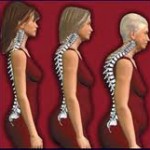Osteoporosis is a bone disorder that weakens the bones by reducing their density.
The disease affects 10 million Americans, with 34 million more suffering from low bone density and at risk of the disease.
Although the disease may strike either gender at any age, women over age 50 have the highest incidence of the disease and the condition carries a high risk of bone fractures, with over a third of adult women falling victim at least once in their lifetime.
Researchers in the Academic Center for Dentistry Amsterdam have created a unique way of identifying patients at risk of osteoporosis by using ordinary dental x-rays.
Detecting osteoporosis using routine dental x-rays, by automatically analyzing specific characteristics of the radiographic trabecular bone pattern. These features include, among others, the thickness, the amount of fragmentation, and the main orientation of the structure of the trabecular bone.
By analyzing a small area depicting the trabecular bone on the ordinary dental radiographs, dentists can predict the osteoporotic condition of the patients to the same extent as the Bone Mass Density (BMD) measurements.
Dental x-rays may indicate a decrease in the density of the jawbone and the bone around the teeth from year to year and show advancing stages of the disease.
People with low bone mass may experience oral health problems that their dentist may detect and recognize as the first stages of osteoporosis.
If your dentist suspects you have osteoporosis, be sure to visit your primary health care practitioner as soon as possible.
There are new medications available for prevention as well as treatment of osteoporosis, and early intervention is the key to managing both your oral and overall health.
You can help prevent osteoporosis by getting enough calcium through diet (dairy, calcium-fortified foods, broccoli and almonds) and adding vitamin D to your diet; initiating weight-bearing and muscle-strengthening exercises; quit smoking and reduce your caffeine and alcohol intake.
